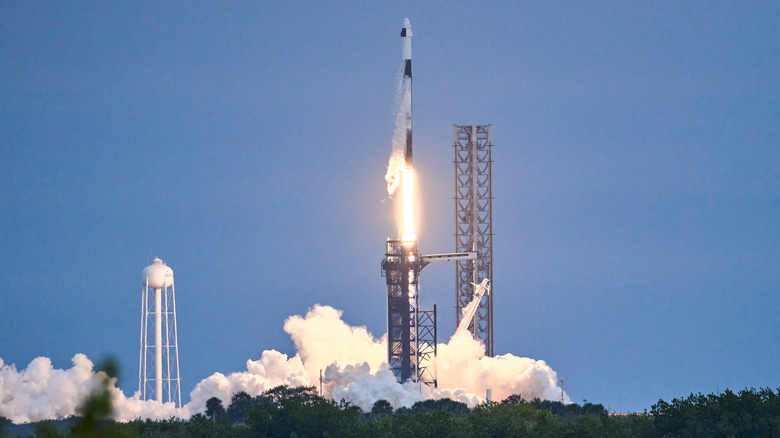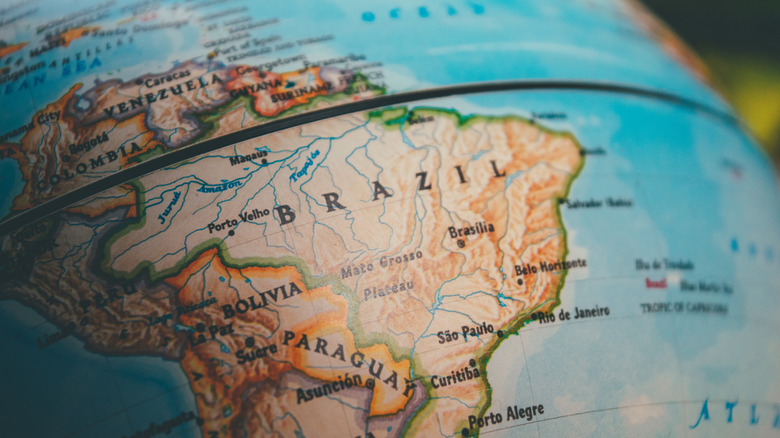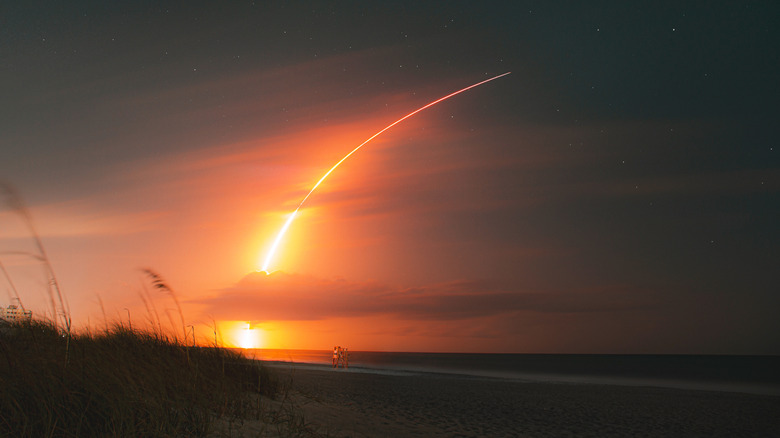Why Does NASA Always Launch Rockets From Florida?
July 16, 1969, marked a historic day for mankind with the launch of the Apollo 11 mission from the Kennedy Space Center in Florida, sending the first humans to the moon. Even today, NASA and companies like SpaceX frequently launch their rockets from the launch sites in Cape Canaveral, Florida. What is it about the sunny state that has made it NASA's preferred launch site throughout these years?
While Apollo 11 was a pivotal moment in the U.S.'s space exploration, the U.S. has been developing rockets and missiles since World War II. Interestingly, the now "Space Coast" of the U.S. wasn't the country's first launch site — the U.S. used to test rockets and missiles from the White Sands test facility in New Mexico. It was also the same facility where the military tested the V-2 rockets that played a crucial role in leading to the space run. However, the military faced some critical issues, such as a short range testing, which worked well for vertical flights, but testing flights with a horizontal curve were not feasible.
The military first launched the Bumper 8 rocket from Cape Canaveral on July 24, 1950 (the military tested rockets and missiles before NASA was formed in 1958, focusing primarily on space exploration), and the significantly longer range was one of the key reasons to make the switch. However, Cape Canaveral offers numerous other reasons for becoming one of NASA's go-to launch site to kickstart its groundbreaking missions.
Cape Canaveral is closer to the equator
The Earth rotates on its axis from west to east, causing all points on Earth to move towards the east with some speed. If you imagine the Earth to be a spinning ball, you will find the places close to the midline — the equator — to be spinning the fastest, and the speed keeps decreasing as you move away (becoming zero at the poles). Cape Canaveral is located fairly close to the equator, making it spin faster from west to east as compared to other far-off locations.
When NASA launches a rocket towards the east, it can leverage the boost from Earth's spin and reach its threshold speed using less fuel. In the case of Cape Canaveral, the Earth rotates at around 914 mph, resulting in close to 0.3 percent lesser fuel usage to reach the threshold speed of around 17,400 mph. The difference in fuel might not seem a lot, but it can help rockets carry extra payload, helping the mission in multiple ways.
The ocean also helps mitigate the risks from a failed launch
Proximity to the equator wasn't the only factor for choosing launch locations. Remember that the Earth rotates from west to east: To leverage the boost from Earth's rotation, rockets need to be launched east. Launching a rocket from a land-locked location would require the rocket to fly over land, making the East Coast suitable for launches.
In case of a failed launch, the debris from the rocket can fall on the ground, causing damage to life and property. Launching from Cape Canaveral, on the east coast, ensures the rockets stay away from populated areas for most of their trajectory. That said, NASA uses its other launch sites in Vandenberg in the west coast to launch rockets needing a north-south or polar orbit, for which Cape Canaveral isn't suited due to the presence of population centers.
Apart from this, the presence of infrastructure such as roads, railway, and shipping during the early '40s and its strategic location were important reasons why Cape Canaveral was chosen as a launch site. With time, the launch site has seen rapid development, making it the "Space Coast" as we know it today, while also attracting tourists to witness rocket launches.


